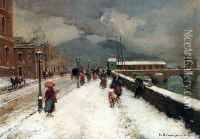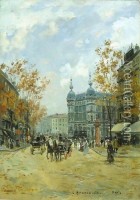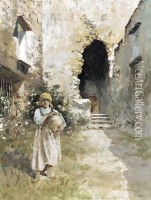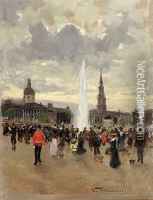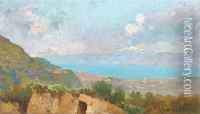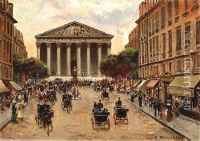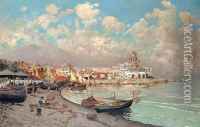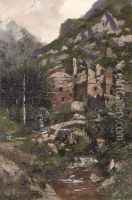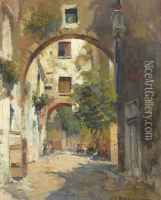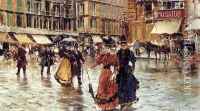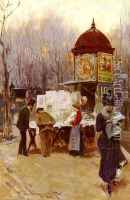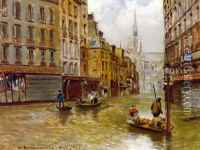Carlo Brancaccio Paintings
Carlo Brancaccio was an Italian painter known for his impressionistic landscapes and cityscapes. Born on June 18, 1861, in Naples, Italy, Brancaccio grew up in a time when the art world was experiencing significant changes, with impressionism at the forefront of challenging traditional academic painting.
Trained at the School of Fine Arts in Naples, Brancaccio was initially influenced by the Realist movement, which emphasized the depiction of everyday life with a focus on ordinary subjects. However, his style evolved as he became increasingly drawn to the impressionist technique, which sought to capture the effects of light and atmosphere.
Brancaccio traveled extensively throughout his career, painting scenes from across Europe. His works often featured bustling city scenes, tranquil seascapes, and vibrant landscapes, characterized by loose brushwork and a bright palette that captured the ephemeral qualities of light. He depicted various cities, including Paris, Venice, and Naples, with an eye for the interplay between natural and urban environments.
Despite the impressionist influence, Brancaccio never fully abandoned the solid compositional structures of his academic training. This blend of traditional and modernist techniques helped him to create works that were both accessible and visually engaging. He exhibited his work frequently, participating in shows such as the Venice Biennale and the Paris Salon, where his paintings were well-received by critics and collectors alike.
Carlo Brancaccio continued to paint until his death on January 10, 1920. Although he may not be as widely known as some of his contemporaries, his contribution to the impressionist movement, particularly in the context of Italian art, remains significant. Today, his paintings can be found in various art collections and museums, offering a glimpse into the vibrant urban and natural scenes that captured his imagination.
